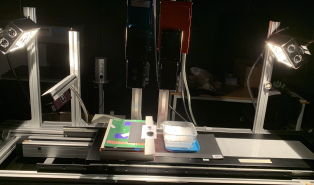
Mathieu Nguyen, Jean-Baptiste Thomas, Ivar Farup, "Investigating the Kokhanovsky snow reflectance model in closerange spectral imaging" in Proc. IS&T 29th Color and Imaging Conf., 2021, pp 31 - 36, https://doi.org/10.2352/issn.2169-2629.2021.29.31

Mathieu Nguyen, Jean-Baptiste Thomas, Ivar Farup, "Investigating the Kokhanovsky snow reflectance model in closerange spectral imaging" in Proc. IS&T 29th Color and Imaging Conf., 2021, pp 31 - 36, https://doi.org/10.2352/issn.2169-2629.2021.29.31